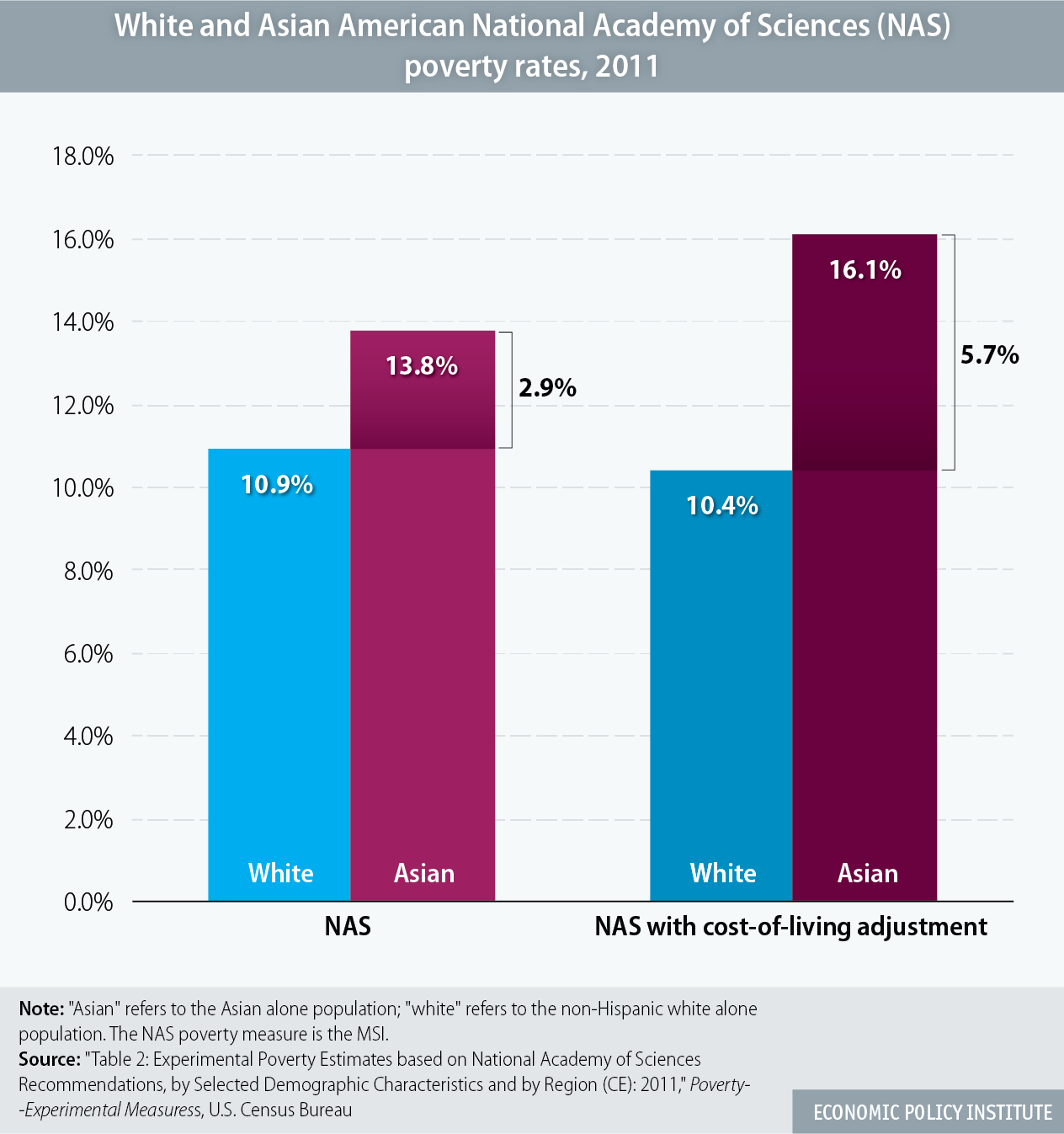Many people assume that all Asian Americans are doing well economically. However, according to the official poverty rate for 2011 from the U.S. Census Bureau, the Asian American poverty rate was 2.5 percentage points higher than the white rate.
One weakness of the official poverty rate is that it does not adjust for geographical cost-of-living differences. Asian Americans are more concentrated in relatively high-cost-of-living metropolitan areas in Western and Northeastern states than are Americans generally. In 2011, nearly a third (32.6 percent) of the Asian population resided in the Los Angeles, New York City, and San Francisco metropolitan areas.1
An alternate poverty measure created by the National Academy of Sciences (NAS) accounts for cost-of- living differences and allows us to see their impact on Asian American poverty estimates.2 The figure shows that the NAS Asian poverty rate without the cost-of-living adjustment is 2.9 percentage points higher than the NAS white rate. With the cost-of-living adjustment, the NAS Asian poverty rate is 5.7 percentage points higher, nearly double the unadjusted difference. The 16.1 percent Asian American poverty rate given by the NAS estimate with the cost-of-living adjustment best captures the full extent of Asian American economic hardship.

Endnotes
1. Author’s analysis of American Community Survey data from Steven Ruggles, J. Trent Alexander, Katie Genadek, Ronald Goeken, Matthew B. Schroeder, and Matthew Sobek, Integrated Public Use Microdata Series: Version 5.0 [Machine-readable database] (Minneapolis: University of Minnesota, 2013), and “Region of Residence, Adults, 2010” table, The Rise of Asian Americans (Washington D.C.: Pew Research Center, 2012).
2. The NAS “MSI” poverty measure used here differs from the official poverty measure in a number of ways. The NAS measure is based on a recent assessment of actual household expenditures while the official measure is based on an assessment of the cost of a minimum diet (times three) from the 1960s. The NAS measure also subtracts taxes and out-of-pocket medical expenses in determining available income, the official measure does not. For more details see Joe Dalaker, “Alternative Poverty Estimates in the United States: 2003” (Washington D.C.: U.S. Census Bureau, 2005).